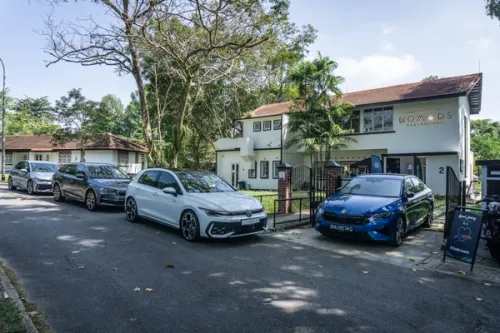Heading for Europe's motorways in a highly automated BMW
The BMW Group and the international automotive supplier Continental are stepping up their collaboration in the field of driver assistance systems. In January, the two companies signed an agreement to jointly develop an electronic co-pilot system capable of supporting highly automated driving. The main goal of the research partnership is to have highly automated driving functions ready for implementation until 2020 and thereafter. The research project on highly automated driving will aim to implement this vision and to take a major step towards making accident-free mobility a reality. In addition to the safety aspect, the researchers also see opportunities for significantly improved convenience and efficiency. Both companies agree that highly automated driving will play a major part in ensuring sustainable personal mobility in future. The joint project between the BMW Group and Continental is scheduled to run from early 2013 to the end of 2014. Over this two-year timeline, a number of prototypes capable of highly automated operation on motorways will be developed. They will then be handed over to a selected group of trained test participants for pilot-testing of their near-production highly automated driving functions. The tests, which will take place on German and European motorways, will take into account all the typical challenges, such as motorway intersections, toll stations, roadworks and national borders.


To help the system progress from vision to reality, a number of teams from both companies will address a range of technical challenges, since only with a complete command of the necessary technology will it also be possible to develop a legal framework for automated driving.
Over the last ten years, the BMW Group has already made important strides towards the development of highly automated driving functions.
In mid-2011, a BMW Group Research and Technology test vehicle underwent a public road test on the A9 motorway between Munich and Nuremberg – with no driver intervention. This research prototype, which is still undergoing continuous improvement, braked, accelerated and overtook other vehicles entirely autonomously, while at the same time always adapting to the current traffic situation and adhering to traffic rules. In the meantime, approximately 10,000 test kilometres have been clocked up with this prototype. If this highly automated research vehicle is to operate smoothly and adaptively in traffic, its operating strategies must be clearly defined. These strategies are derived from two main components – accurate positioning of the vehicle in its traffic lane and robust recognition of all vehicles and objects in the vehicle’s immediate environment. The sensing is performed by a fusion of diverse and complementary sensor technologies including all-round lidar, radar, ultrasound and camera scanning. Despite this 360° sensing capability, there is little on the outside to tell this vehicle apart from a standard model.
The principal technologies required for highly automated driving were developed by the BMW Group Research and Technology engineers in the precursor research projects BMW TrackTrainer and Emergency Stop Assistant. Based on a fusion of highly accurate digital map, GPS and video data, the BMW TrackTrainer can navigate vehicles round racing circuits fully autonomously, following the ideal “racing line”. On 21 October 2009, the system was used to automatically guide a vehicle round the Nürburgring North Loop. And on 25 May 2011, when the BMW TrackTrainer came to the USA, a demonstration on the Laguna Seca Raceway in California showed that highly automated vehicles can deliver impressive performance.
If a medical emergency is identified in the vehicle, for example if biosensors detect that the driver is having a heart attack, the BMW Emergency Stop Assistant is able to switch to highly automated driving mode and bring the vehicle safely to a stop. The system activates the hazard warning lights and, taking into account the traffic situation, manoeuvres the vehicle in a safe and controlled way to a standstill on the nearside shoulder. At the same time an emergency call is automatically sent out via BMW eCall to request medical assistance and notify the traffic authorities. This ensures the emergency response effort is both efficient and appropriate.
Related Article: Video: Blonde driving supercharged 620hp BMW E92 M3
Credits:


Get the Best Price for your used car
from 500+ dealers in 24 hours

- Convenient and Hassle-Free
- Consumer Protection
Transparent Process
With No Obligation








